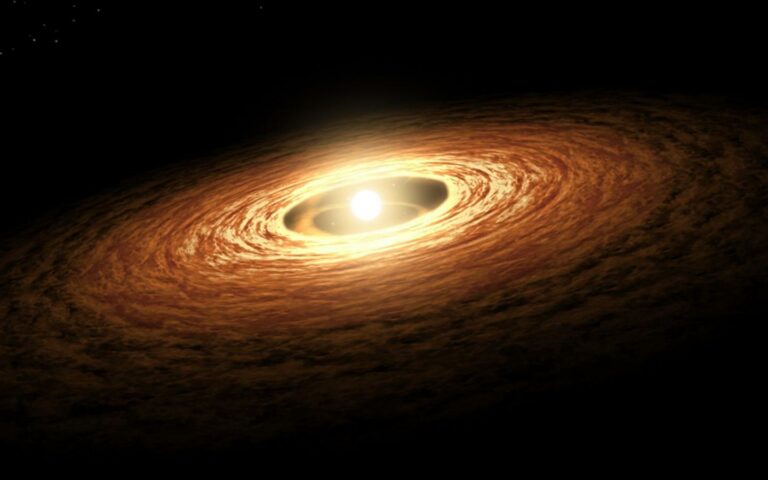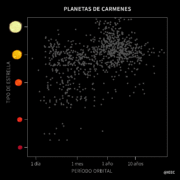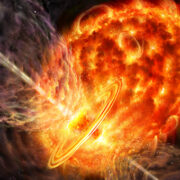An international scientific team led by Centro de Astrobiología (CAB, CSIC-INTA) has used the European Southern Observatory’s (ESO) VLTI interferometer to observe the innermost parts of a sample of protoplanetary discs and test current models of star formation.
Young stars are surrounded by disc-shaped structures whose material, gas and dust, “feeds” the central star, leading to their formation through a process called accretion. Furthermore, these discs are called protoplanetary discs, since it is in these discs that planets form. The dust in these disks disintegrates at temperatures above about 1500 oC and therefore disappears from the vicinity of the star due to the high temperatures generated by its radiation. This explains a well-known empirical correlation that states that the hotter and more luminous the stars are, the larger the inner radius of the disc that gives rise to their central hole.
However, this correlation between the disc’s inner radius (i.e. the size of the central hole) and the star’s luminosity shows a large dispersion, with some discs having holes of different sizes even though the luminosities of their central stars are similar. In particular, some stars show much smaller holes than expected. To explain this, it is usually assumed that in these stars there is a large amount of gas in the disc hole, which would act as a protective shield against stellar radiation and allow the dust to survive at closer distances to the star. Likewise, the presence or absence of large amounts of gas very close to the star is associated with different star formation (accretion) mechanisms.
An international scientific team led by Centro de Astrobiología (CAB, CSIC-INTA) has carried out a study to test this hypothesis, which has recently been published in the journal Astronomy & Astrophysics. To do so, they measured the size of the holes in the discs around five stars considered to be “extreme”. These are stars known as “Herbig Be”, young stars that are hotter and more massive than the Sun, have not yet started the hydrogen fusion process in their core, and are surrounded by protoplanetary discs. The sample of stars was heterogeneous in the sense that, while some had an immense amount of gas close to the star and a given formation mechanism, the others had no such gas and a different formation mechanism. Translated with www.DeepL.com/Translator (free version)
As Pablo Marcos-Arenal, CAB researcher and co-author of the study, points out, “By analysing our observations we have found, to our surprise, that the position of these stars in the size-luminosity correlation is not as expected according to the initial hypothesis. To make sure, we have collected and updated the luminosity and hole size data for all available stars. This has provided the most complete size-luminosity correlation to date.
For Ignacio Mendigutía, CAB researcher and co-author of the study, “For the first time we show that the hypotheses commonly used to interpret the different positions of stars in the size-luminosity correlation are not generally valid, so something is wrong in our interpretation of this diagram and, therefore, in our understanding of how stars form”.
To carry out the present study it has been necessary to use the most advanced instrumentation currently available. In particular, since the disc holes are of the order of 1 AU (Astronomical Unit, or the Earth-Sun distance), and since the observed stars are hundreds, even more than a thousand parsecs away (1 parsec is equivalent to 3.26 light years), it was necessary to resolve angular sizes of the order of 1 millisecond of arc, i.e. an angular size one million times smaller than that of the full Moon in the sky. “It is comparable to trying to measure the thickness of the tip of a pin from more than 200 km away,” says Mendigutía. To achieve this precision, the largest telescopes available, the Very Large Telescopes (VLTs), are not enough, unless the four VLTs are combined to create a single giant telescope using the interferometric technique. As Marcos-Arenal points out, “The latest generation instrument that has allowed us to carry out this study has been GRAVITY/VLTI, which was originally designed to observe the central black hole of our Galaxy and now has other uses, such as the detection of exoplanets or, in our case, the innermost parts of protoplanetary discs, key regions for understanding star formation”.









